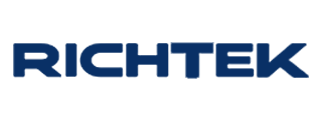
eic
2023-08-16 08:58:26
晨欣小编
EIC (Engineering-Integrated Construction) is an innovative approach that combines engineering principles with construction techniques to optimize the design, construction, and lifecycle management of infrastructure projects. This integrated approach maximizes efficiency, reduces costs, and ensures the long-term sustainability of the built environment. In this article, we will delve into the various aspects of EIC and explore its advantages and applications in modern construction.
电子元器件物料推荐:
One of the key features of EIC is the collaborative nature of the process. EIC brings together engineers, architects, contractors, and other stakeholders from the beginning of a project to work in synergy towards a common goal. This collaboration allows for the integration of engineering concepts into every stage of the construction process, ensuring that the project is designed and built in a way that maximizes functionality, durability, and resource efficiency.
One of the fundamental aspects of EIC is the integration of structural engineering principles into the design phase. Traditionally, structural engineers were involved in a project after the initial design had been completed. However, with EIC, structural engineers are brought in at an early stage to provide their expertise, resulting in designs that are structurally sound and efficient in their use of materials. This early involvement also allows for the optimization of construction techniques, ensuring that the building process is streamlined and cost-effective.
Another aspect of EIC is the use of advanced construction technologies. These technologies include Building Information Modeling (BIM), prefabrication, and modular construction. BIM allows for the creation of a digital representation of the entire project, enabling easier coordination and visualization of the various components. Prefabrication involves constructing components off-site and assembling them on-site, reducing construction time and costs. Modular construction allows for the assembly of building modules in a factory-like setting and their subsequent transportation and installation at the project site. These advanced construction technologies not only enhance efficiency but also improve safety and quality control.
EIC also emphasizes the importance of lifecycle management. Engineers and construction professionals consider the long-term maintenance and operation of the infrastructure during the design and construction phases. This holistic approach ensures that the infrastructure is built to be durable, energy-efficient, and easy to maintain. Furthermore, EIC promotes the use of sustainable materials and construction practices, minimizing the environmental impact of the project.
The advantages of EIC are numerous. Firstly, it leads to shorter construction times, reduced costs, and improved quality. Through early collaboration and optimization of construction techniques, projects can be completed in a more efficient manner, saving time and money. Secondly, the integrated approach of EIC results in better coordination among different disciplines, reducing conflicts and errors during the construction process. This ultimately leads to fewer delays and rework. Finally, the focus on sustainability and lifecycle management ensures that the infrastructure meets the needs of the present without compromising the ability of future generations to meet their own needs.
In conclusion, EIC is a groundbreaking approach that integrates engineering principles with construction techniques to optimize the design, construction, and lifecycle management of infrastructure projects. This collaborative and holistic approach maximizes efficiency, reduces costs, and ensures the long-term sustainability of the built environment. Through the use of advanced construction technologies, such as BIM, prefabrication, and modular construction, EIC revolutionizes the construction industry. As we strive for a more sustainable and efficient future, EIC will undoubtedly play a pivotal role in shaping the way we build and maintain our infrastructure.
























 售前客服
售前客服